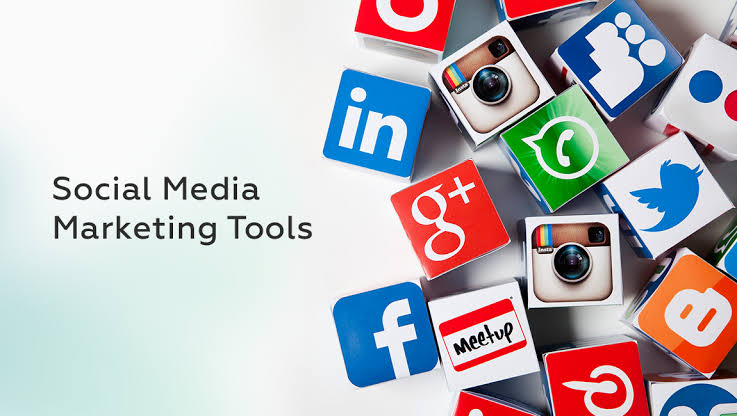The social media management landscape in 2025 is defined by AI, cross-platform capability, and content-commerce integration.
Social media management has evolved rapidly over the last few years. As of June 2025, it is no longer just about scheduling posts or monitoring engagement—it is about advanced AI content generation, deep analytics, social commerce integration, and managing cross-platform strategies. Both brands and individual creators demand tools that save time while delivering meaningful insights. Here’s an in-depth look at the top 10 social media management tools dominating the space in 2025, ranked from number 10 to number 1.
10. Sprout Social
Sprout Social remains a solid choice for brands looking for a professional, feature-rich platform. In 2025, Sprout has invested heavily in AI to automate content recommendations and even generate drafts tailored to brand voice. It offers detailed audience analytics, competitor benchmarking, and seamless integrations with ad platforms. While not the cheapest option, Sprout Social justifies its price with enterprise-level support and deep reporting, making it popular among mid-sized agencies and larger corporate teams.
9. SocialBee
SocialBee has built a reputation for making social media scheduling and recycling easy, especially for small businesses and solo creators. By 2025, it has added AI-powered content categorization and automated queue management, making sure evergreen content never gets forgotten. SocialBee also expanded its integrations beyond traditional platforms to include TikTok, Threads, and even LinkedIn Newsletters. Its pricing tiers remain affordable, making it a favorite for small marketing teams that want maximum ROI.
8. CoSchedule
Best known for its Marketing Calendar, CoSchedule remains a top choice for teams that want to unify social media with broader marketing campaigns. In 2025, it has integrated more deeply with AI-writing tools and now features predictive analytics to forecast engagement. CoSchedule’s value lies in its ability to centralize content planning across blog posts, email marketing, and social media. This holistic approach appeals to marketers who don’t want their channels operating in silos.
7. Zoho Social
Zoho Social is part of the wider Zoho ecosystem, making it especially appealing to businesses already using Zoho CRM or Zoho Marketing tools. In 2025, it has improved its AI-based sentiment analysis and now offers better Instagram Reels and TikTok scheduling, reflecting shifting content trends. Its competitive pricing and multi-user collaboration features make it accessible to startups and SMEs, while its integration with Zoho’s other products delivers a unified marketing stack.
6. Planable
Planable has emerged as a favorite among creative teams and agencies thanks to its intuitive, collaborative workflow. It lets teams preview posts exactly as they’ll appear on social media, making client approvals fast and visual. By June 2025, Planable has introduced AI caption suggestions and better scheduling for vertical video formats like Reels and Shorts. Its clear pricing and focus on agency-friendly features have won it a loyal user base looking for transparency and streamlined collaboration.
5. Metricool
Metricool has surged in popularity thanks to its powerful analytics paired with simple publishing tools. In 2025, it stands out for its ability to unify organic and paid campaign reporting across Instagram, Facebook, TikTok, Google Ads, and more. The tool’s social media competitor analysis has become more robust, allowing brands to benchmark effectively. Its pricing remains competitive, appealing to freelancers, agencies, and businesses wanting a single dashboard for everything from content scheduling to ad performance.
4. Buffer
A veteran in the social media space, Buffer has continued to adapt. In 2025, Buffer offers AI-powered post creation, including automatic rewriting for different brand voices and platforms. Its link-in-bio feature has become more advanced, supporting social commerce integrations for Instagram and TikTok shops. Buffer’s simple, clean interface remains a big draw for users who want a no-nonsense, affordable solution. Its appeal spans solo entrepreneurs, small teams, and nonprofits looking for ease without sacrificing functionality.
3. Later
Originally famous for its Instagram-focused scheduling, Later has become a powerhouse for all visual-first platforms. By 2025, Later’s AI tools can auto-generate captions in multiple languages, suggest trending hashtags, and even help storyboard Reels and Shorts. Later has also expanded its commerce features, helping brands sell directly from their social profiles. Its visual content calendar and straightforward pricing make it particularly popular among ecommerce brands, influencers, and photographers who rely on striking visuals to sell.
2. Hootsuite
Hootsuite is one of the most established players in the field and remains indispensable for large organizations and agencies. In 2025, Hootsuite has invested in advanced AI for sentiment analysis, crisis monitoring, and content creation. Its new integrations include direct posting to emerging platforms like Threads and BeReal. Hootsuite also offers robust team permissions and approval workflows, essential for big brands managing multiple accounts. Its advanced reporting tools help justify ROI to stakeholders, keeping it at the top of the enterprise segment.
1. Adobe Express (formerly ContentCal and Spark)
Adobe Express has become the number one social media management tool in 2025 thanks to its seamless blend of design, scheduling, and AI. Since acquiring ContentCal, Adobe has turned Express into an all-in-one platform where users can design stunning visuals, generate captions, schedule posts, and analyze results without leaving the app. In 2025, its AI features can draft platform-specific posts, suggest optimal publishing times, and even create short videos from static images. For brands and creators that care about design as much as messaging, Adobe Express offers unmatched value, supported by Adobe’s massive library of assets and templates. Its competitive pricing tiers make it accessible to solo creators and large marketing teams alike.
